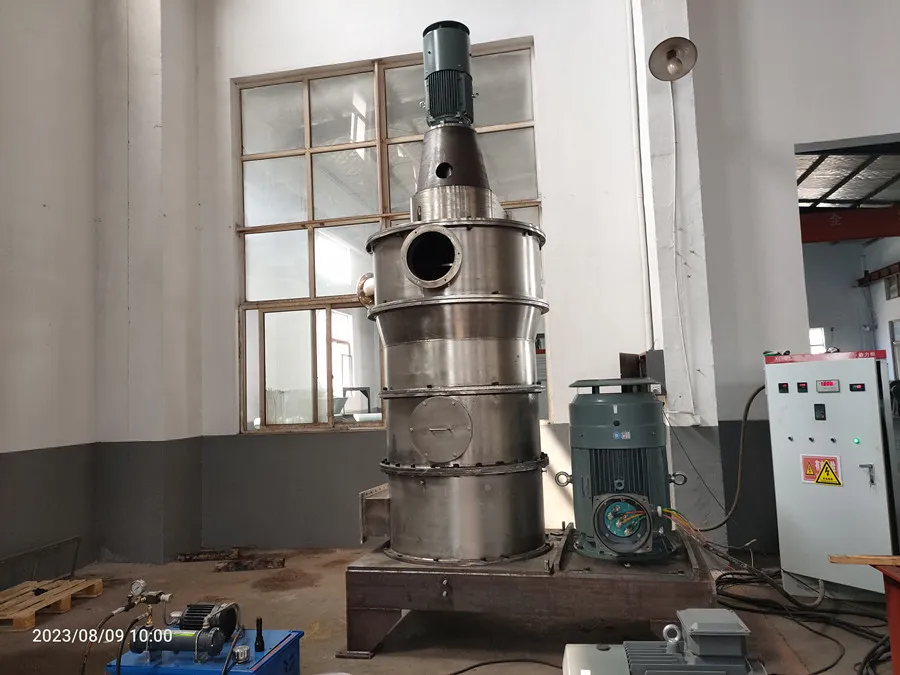The air classifying mill is a versatile and efficient grinding machine widely used in various industries. It combines the principles of impact grinding and particle classification to achieve precise particle size reduction and distribution. This article will explore the working principle of an air classifying mill and its applications across different industries. We will also discuss the advantages offered by this equipment.

Understanding the Air Classifying Mill:
An air classifying mill, also known as an air classifier mill or ACM, is a grinding mill equipped with an integrated dynamic air classifier. It is designed to grind materials into fine powders while simultaneously classifying them based on their particle size. The combination of grinding and classification makes the air classifying mill highly efficient and capable of producing uniform particle sizes.
Working Principle of an Air Classifying Mill:
The air classifying mill operates based on the following steps:
- Material Feeding: The material to be ground enters the grinding chamber through a feed inlet. This can be achieved manually or through a controlled feeding system.
- Grinding Zone: A high-speed rotor or impeller rotates within the grinding chamber, imparting kinetic energy to the particles. The material undergoes repeated collisions with the rotor blades, resulting in size reduction through impact and attrition forces.
- Classification Zone: As the ground particles move towards the top of the mill, they are carried by the airflow generated by the rotor. The particles enter the integrated dynamic air classifier, which uses centrifugal force and adjustable vanes to separate particles based on size and weight.
- Particle Separation: The air classifier sorts the particles into different size fractions. Fine particles that meet the desired product specifications are carried by the upward airflow and collected in a cyclone separator or bag filter. Coarser particles return to the grinding zone for further processing.
Applications of Air Classifying Mills:
Air classifying mills find applications in various industries, including:
- Pharmaceuticals: Air classifying mills grind and classify pharmaceutical powders, ensuring consistent particle sizes for drug formulations, tablet compression, and other processes.
- Chemicals: These mills are utilized in the chemical industry for grinding and classifying a wide range of materials, including pigments, dyes, resins, and fine chemicals.
- Food and Beverage: Air classifying mills are crucial in producing powdered food ingredients such as spices, sugar, cocoa, and flour. They ensure uniform particle sizes for improved product quality and processing efficiency.
- Minerals and Mining: The mining industry employs air classifying mills to grind minerals and ores, achieving desired particle sizes for further downstream processes, such as flotation or leaching.
- Plastics and Polymers: Air classifying mills reduce plastic pellets or regrind into fine powders, enabling efficient recycling, compounding, and production of polymer-based products.
Advantages of Air Classifying Mills:
The use of air classifying mills offers several advantages:
- Precise Particle Size Control: Air classifying mills precisely control particle size distribution. The integrated air classifier ensures accurate classification and allows for adjustable cut points, facilitating the production of particles with specific size ranges.
- High Grinding Efficiency: The combination of impact grinding and classification in a single unit improves grinding efficiency. The controlled particle size reduction ensures optimal energy utilization and minimizes overgrinding, enhancing productivity.
- Versatility: Air classifying mills are versatile machines capable of handling various materials and achieving various particle sizes. Their flexibility makes them suitable for diverse applications across different industries.
- Scalability: Air classifying mills are available in different sizes and capacities, offering scalability to meet production requirements. This allows manufacturers to adapt their grinding processes based on demand without significant changes in equipment.
- Particle Size Consistency: The integrated air classifier ensures consistent particle size distribution, producing uniform product quality and performance. This is vital for industries that require precise control over particle sizes, ensuring product consistency and meeting customer specifications.
- Dust Control: Air classifying mills often incorporate efficient dust collection systems, such as cyclone separators or bag filters, to minimize airborne particles and maintain a clean working environment.
Air classifying mills are highly efficient grinding machines used across various industries. Their ability to combine grinding and classification in a single unit makes them versatile and effective in achieving precise particle size reduction and distribution. The advantages of air classifying mills include precise particle size control, high grinding efficiency, versatility, scalability, consistent particle size distribution, and effective dust control. Manufacturers can optimize their grinding processes, improve product quality, and enhance overall operational efficiency by understanding the working principle and applications of air classifying mills.
